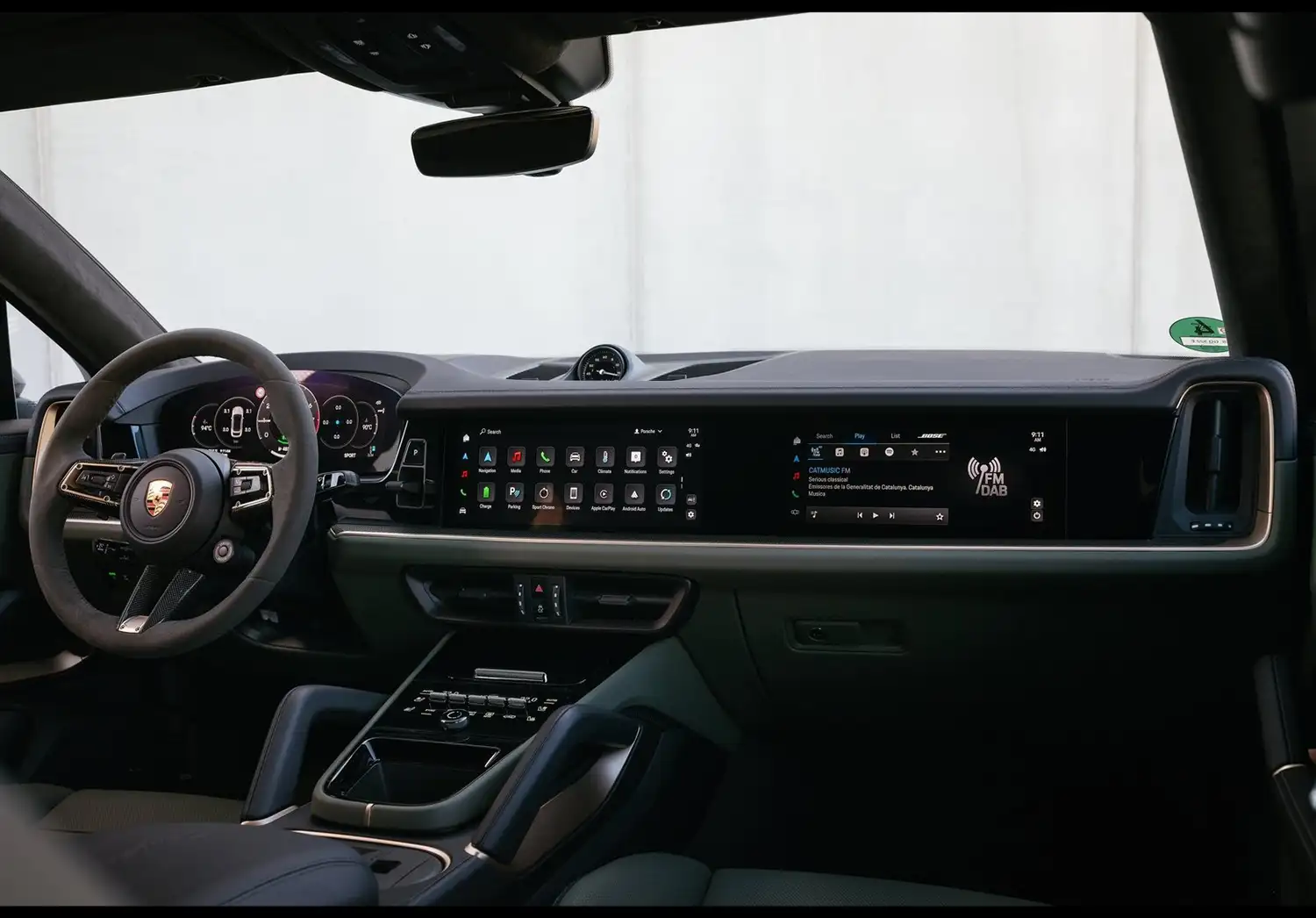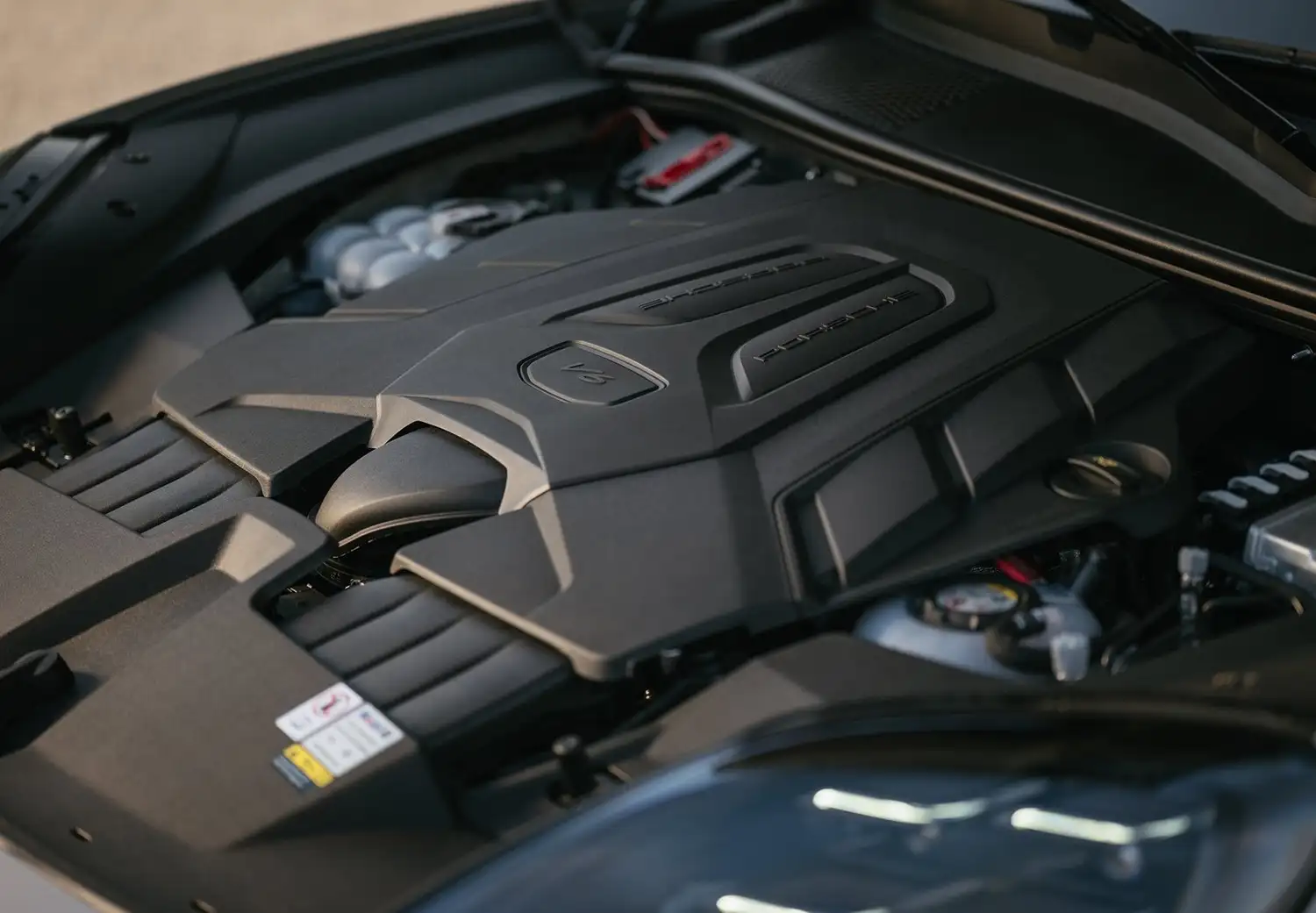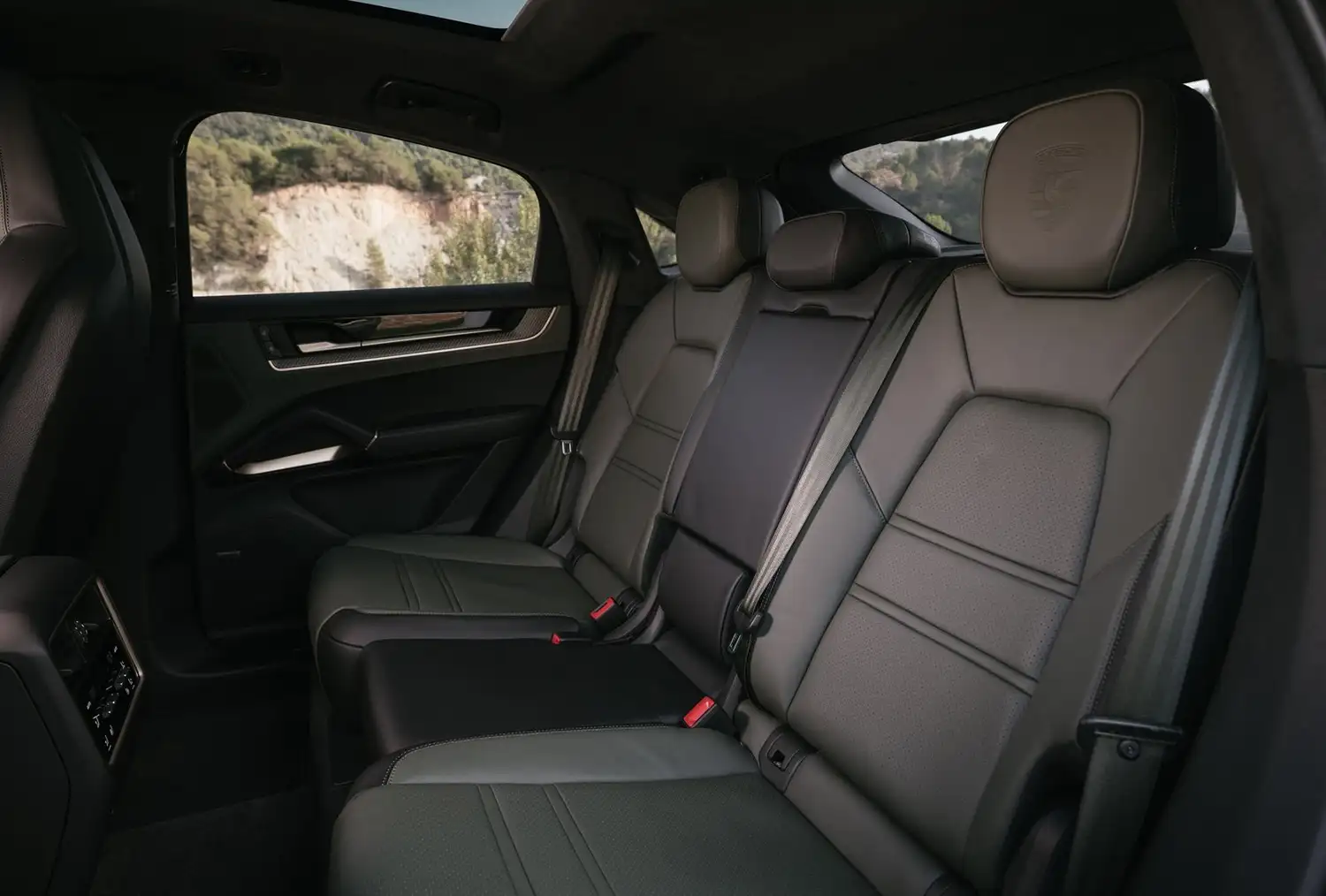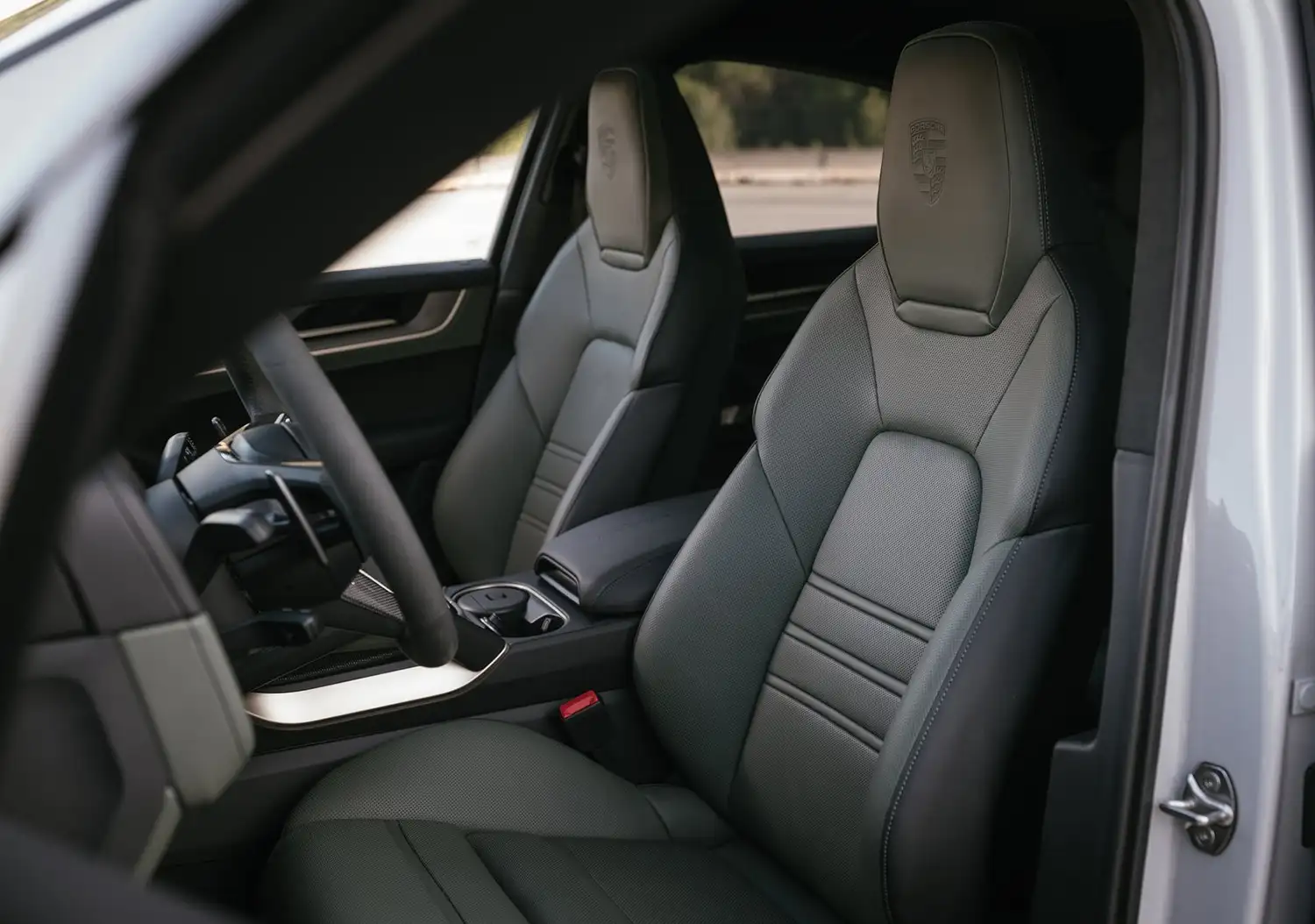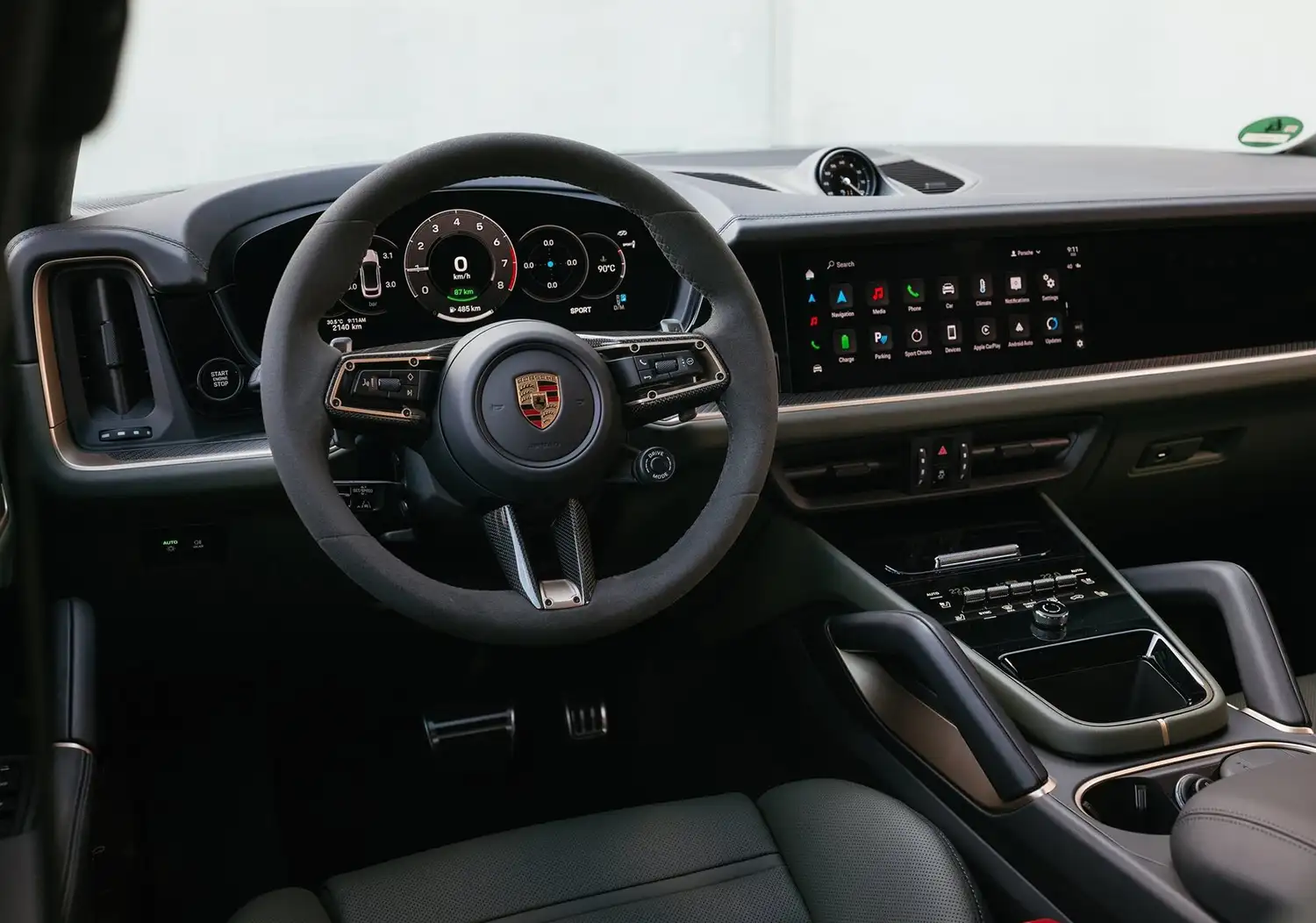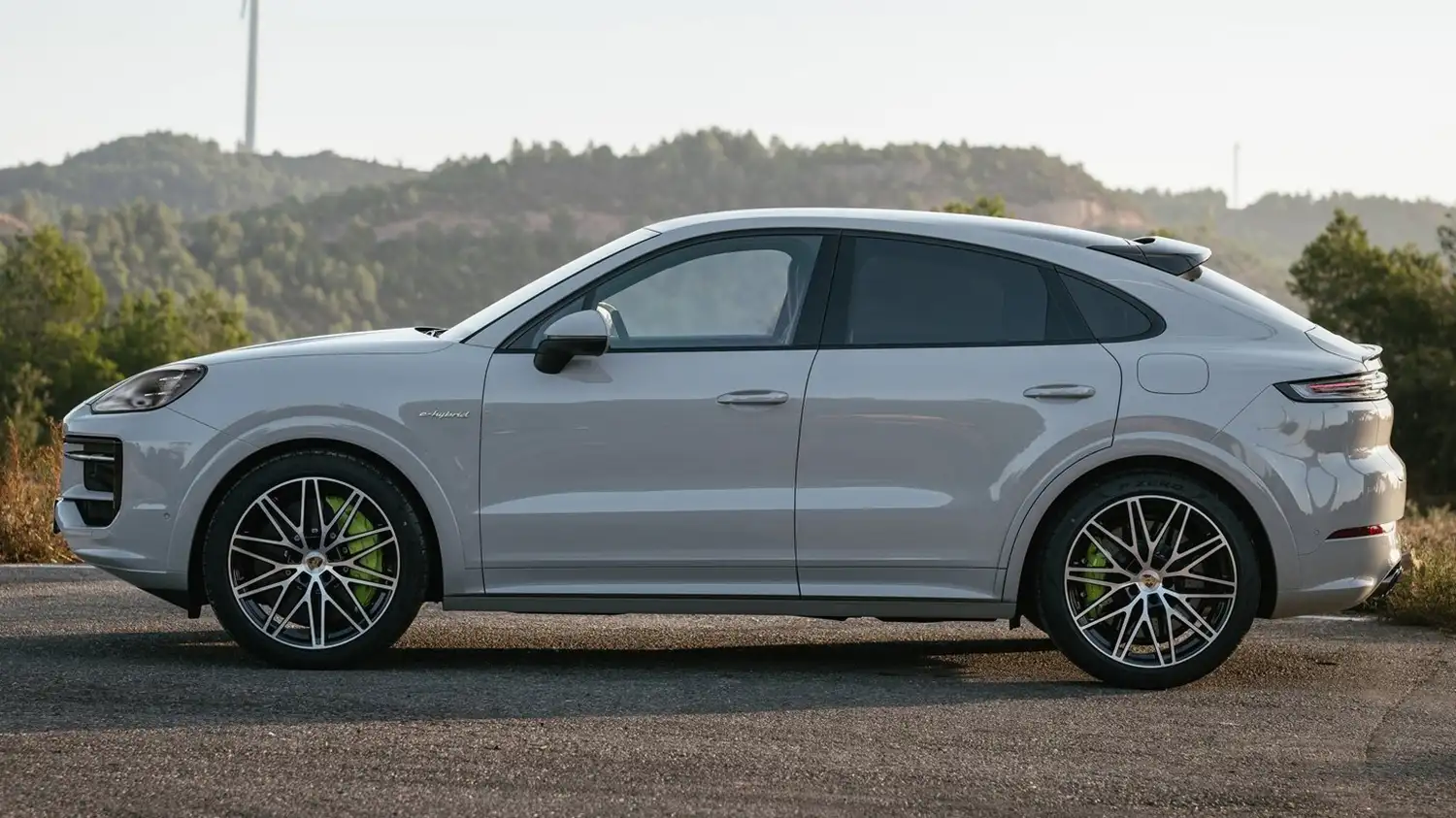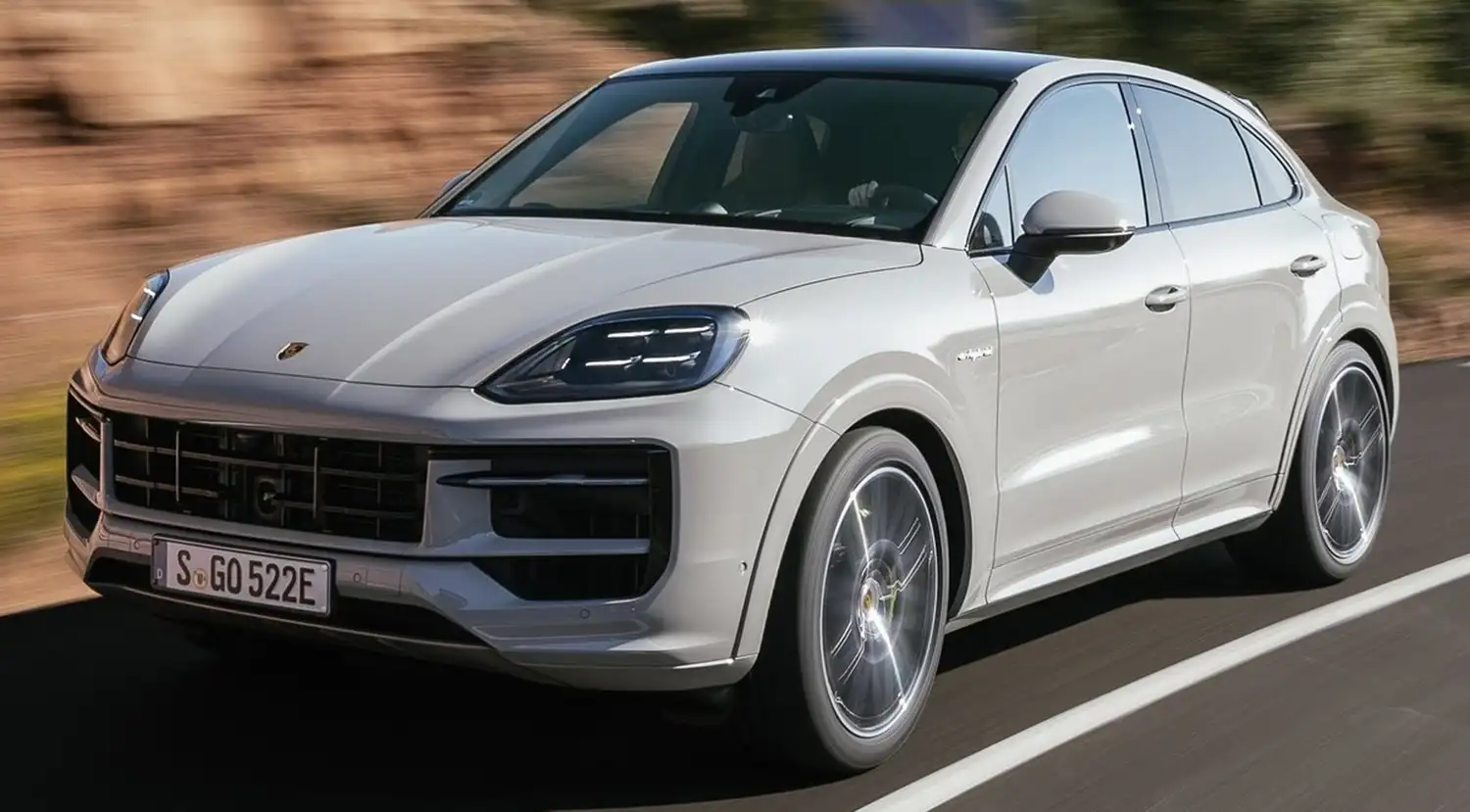
The E-Hybrid models of the Cayenne combine performance and efficiency in innovative ways. It’s truer than ever before: comprehensively revamped powertrains enable greater range, higher system output and shorter charging times.
The heart of the hybrid system in all E-Hybrid is a new electric motor. A coil with an optimised number of turns as well as a new magnet and an increased phase current of the pulse inverter boost the electric power by 30 kW to 130 kW (176 PS). An additional 50 Nm takes the torque up to 450 Nm. Moreover, the new electric motor can convert 30 per cent more braking power into electrical energy in generator mode and store it in the traction battery: The new Cayenne E-Hybrids now recuperate with a capacity of up to 88 kW and at speeds down to 2 km/h. The predecessor braked down to a speed of 14 km/h with the electric motor. The compact unit is integrated in the revamped eight-speed automatic transmission.
A new brake booster further refines the driving experience in all E-Hybrid models. The Cayenne uses the technology to make the transition between the recuperation brake and the friction brake particularly smooth. This results in a consistent pedal feel throughout the braking process and thus to optimal dosing of braking power in both everyday and dynamic driving situations.
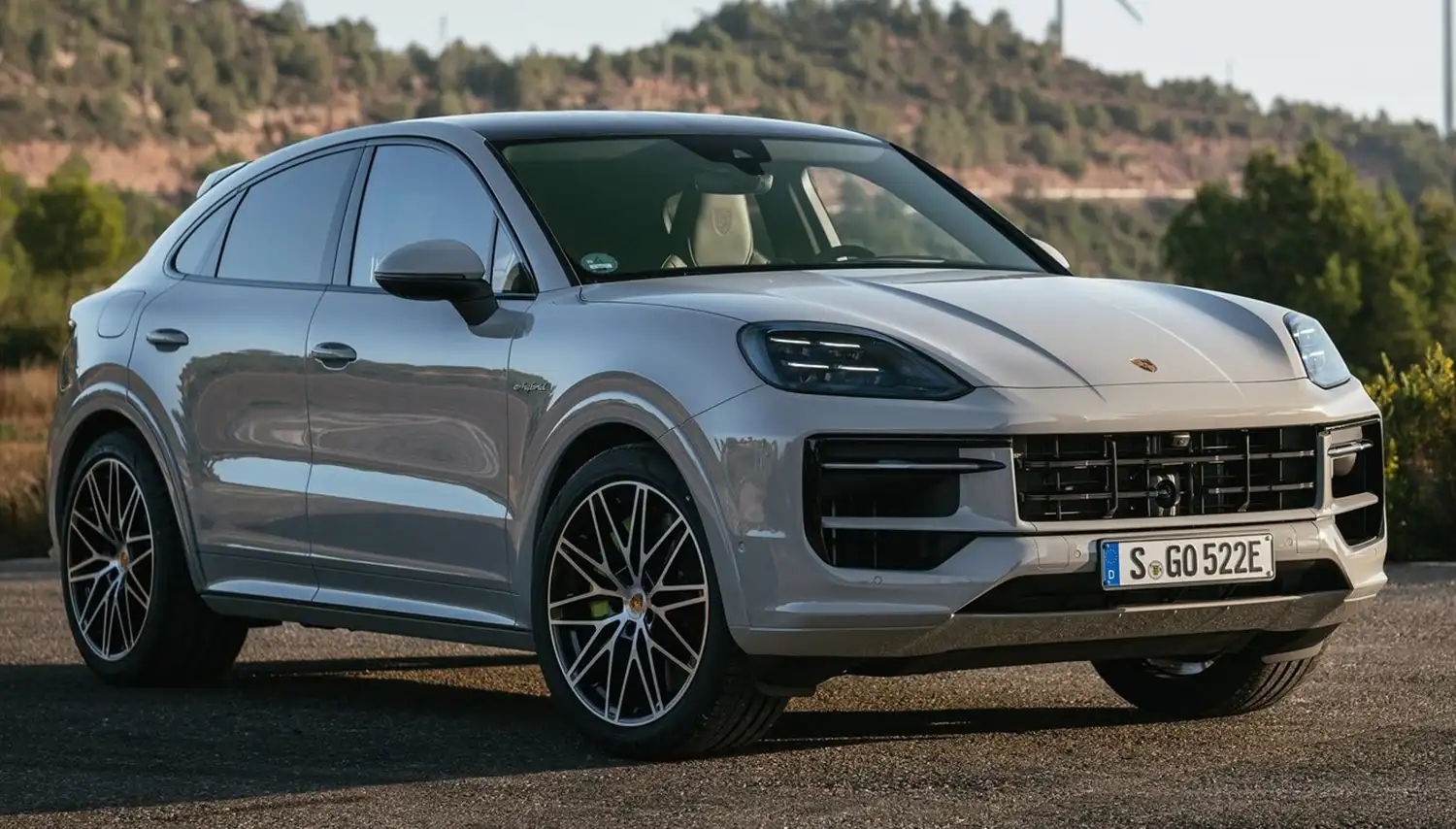
Porsche is also equipping all new Cayenne E-Hybrid models with a larger high-voltage battery, with an 8 kWh capacity increase to 25.9 kWh all told. Compared to predecessor models, it thus enables significantly more all-electric trips. A new on-board charger with a maximum charging capacity of 11 kW shortens the charging process at a suitable power source to under two-and-a-half hours.
The driving modes of the new Cayenne are designed to use the available energy as intelligently and efficiently as possible. In the Sport driving programme, the minimum charge level of the traction battery drops from 30 to 20 per cent, and in the Sport Plus driving programme from 80 to 30 per cent. This means the internal combustion engine needs to recharge the battery less frequently, which improves the overall efficiency of the vehicle. Another new feature are the charging strategies in the E-Charge driving programme: When driving in built-up areas and at speeds of less than 55 km/h, the drive system operates in hybrid mode. The combustion engine and the electric motor share the workload and the charge level stays constant. Outside of town and at higher speeds, the internal combustion engine takes over completely and charges the battery to a maximum charge level of 80 per cent. The revised Hybrid-Auto mode includes environmental and navigation data in the powertrain strategy and enables a higher proportion of the route to be driven on electric power alone in city driving.

Cayenne S E-Hybrid
The Porsche Cayenne S E-Hybrid combines the dynamic demands of the Cayenne S with the progressive drive concept of the Cayenne E-Hybrid. In terms of the performance-relevant aspects of powertrain and suspension, Porsche is positioning the new Cayenne S E-Hybrid above the Cayenne S and Cayenne E-Hybrid. In doing so, the sports car manufacturer is creating yet another exhilarating point of access to efficient and advanced hybrid technology.
With 260 kW (353 PS), the three-litre V6 turbo engine in the Porsche Cayenne S E-Hybrid has 36 kW (49 PS) more power than the V6 in the Cayenne E-Hybrid. Together with the new electric motor, this results in a system output of 382 kW (519 PS). The SUV and SUV Coupé accelerate from zero to 100 km/h in 4.7 seconds and reach a top speed of 263 km/h. The electric range is up to 90 km (EAER City).
Cayenne Turbo E-Hybrid
The Porsche Cayenne Turbo E-Hybrid assumes the mantle of the previous Cayenne Turbo S E-Hybrid as the most powerful model in the portfolio. Both body styles combine superior drive performance with high efficiency. The revised hybrid technology in the new Cayenne supports both the day-to-day usability and the dynamic qualities of the top Cayenne.
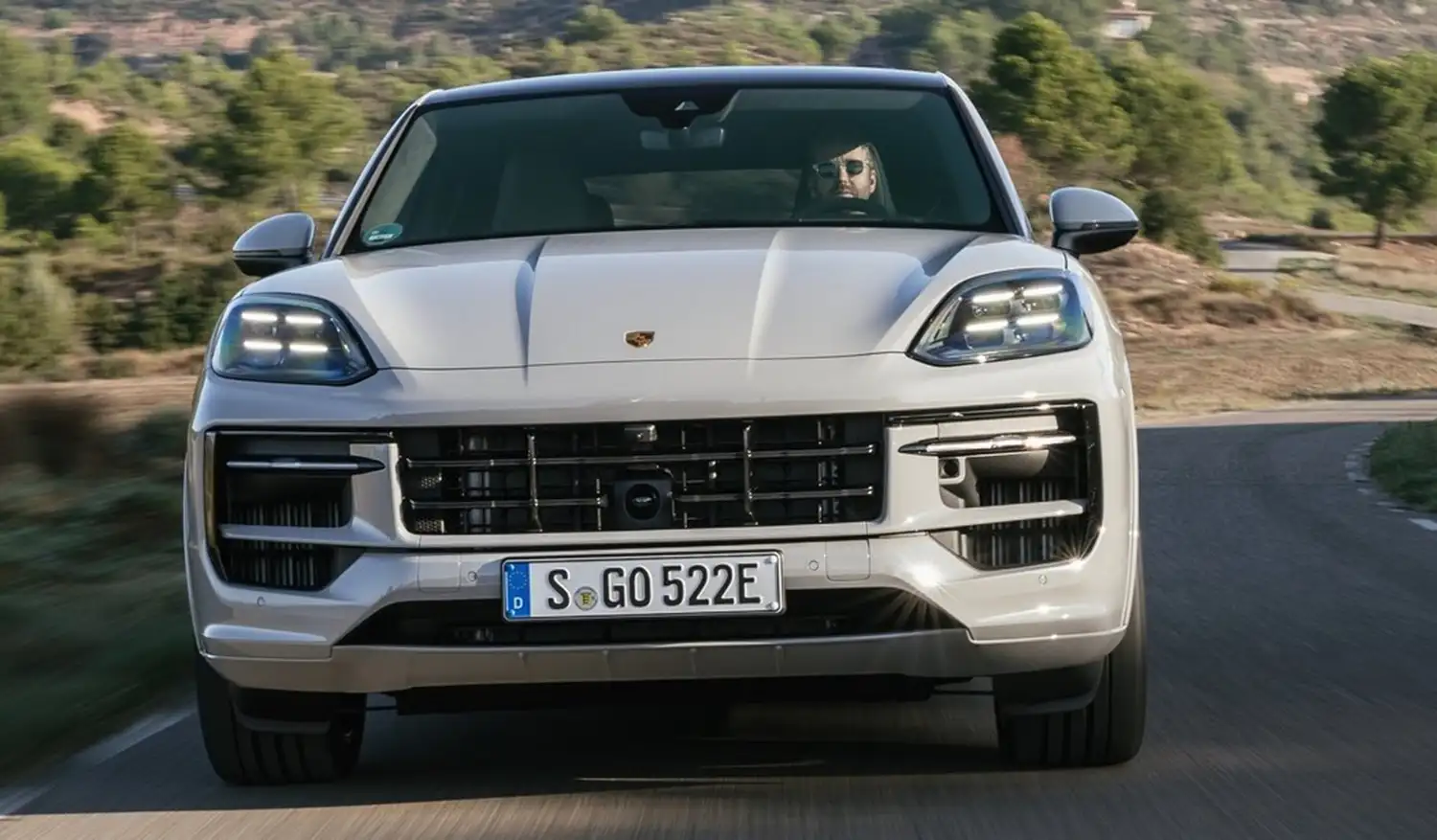
The new electric motor works in conjunction with a powerful four-litre V8 twin-turbo engine in the Porsche Cayenne Turbo E-Hybrid. The combustion engine alone has an output of 441 kW (599 PS). Together, the two power units deliver an impressive combined power output of 544 kW (739 PS) and a maximum torque of 950 Nm. This amounts to a power boost of 43 kW (59 PS) over the previously offered Cayenne Turbo S E-Hybrid. The performance of the Cayenne Turbo E-Hybrid amply justifies its billing as the top of the line in the sports car of SUVs. With Launch Control, it crushes the sprint from 0 to 100 km/h in just 3.7 seconds and reaches a top speed of 295 km/h.
The eight-cylinder twin-turbo has been extensively revised for use in the new Cayenne to reduce fuel consumption and emissions. The switch from a twin-scroll to a single-scroll turbocharger results in higher exhaust-gas temperatures, which reduces fuel consumption in the highly dynamic range. Increased fuel injection pressure to 350 bar improves efficiency, while electrically controlled wastegates boost engine responsiveness. A new two-stage variable valve lift with two cam profiles per valve on the intake camshaft adjusts the valve train depending on the load condition. At low loads, the engine works with short valve opening times and small valve lift, at high power requirements with long opening times and large lift. The fully variable camshaft control Vario Cam Plus also varies the duration of the valve overlap. This improves performance while further reducing CO2 emissions. Optimisations to the piston rings and piston cooling also promote the robustness of the powerful eight-cylinder engine.
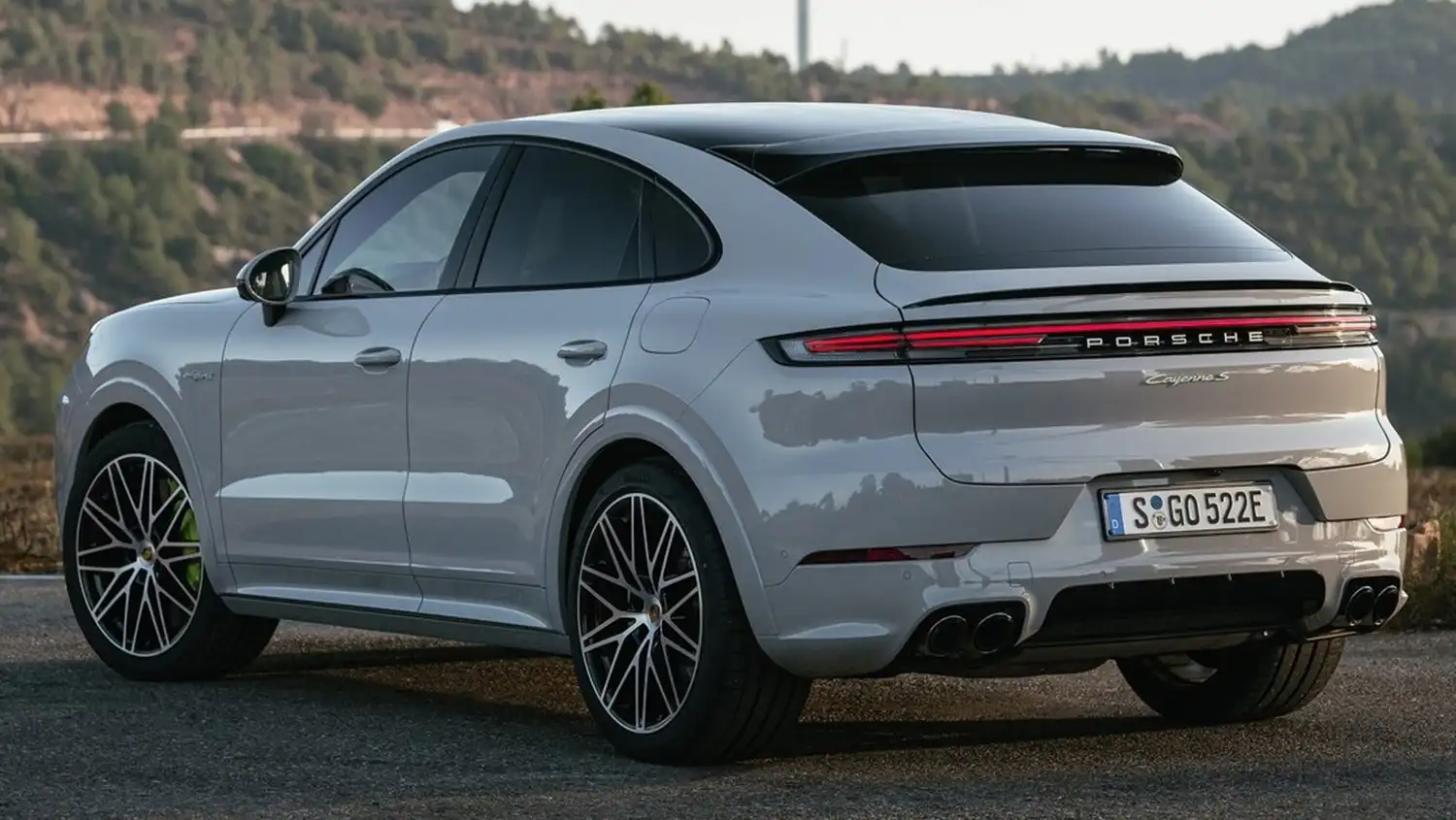
Adaptive air suspension for the maximum bandwidth
The Porsche Cayenne S E-Hybrid and the Cayenne Turbo E-Hybrid come as standard with adaptive air suspension in all variants, equipped with the new two-chamber, two-valve technology. The controlled vibration dampers on the front and rear axles of the Porsche Active Suspension Management (PASM) system now feature two valves for damping the body and wheel movements instead of one, which makes it possible to change the rebound and compression stages of the dampers independently of each other. The advantage of the new technology is a significant increase in comfort and in driving safety, thereby achieving an even broader range between the Comfort and Sport Plus characteristics.
Compression and rebound when driving make different demands of the dampers positioned between the wheel and body. This means that any movements by the body must remain as smooth and comfortable for the passengers as possible. The wheel, which in contrast is considerably lighter in weight, still needs to exhibit good damping characteristics in even the worst road conditions to guarantee traction. The new two-valve technology goes a long way to resolving the conflict between the goals of comfort for the passengers and optimal wheel suspension without compromising driving safety. Depending on the situation, the valve for the compression stage can set variable damping forces independently of the valve for the rebound stage, and vice versa. This enables the new Cayenne to offer a clearly noticeable increase in comfort with a smoother vehicle body, better handling performance and improved support for rolling and pitching movements as standard.

The new adaptive air suspension further enhances the driving experience. In combination with the new two-valve technology, a variable spring rate noticeably outperforms the previous air suspension. The variable spring rate is implemented by means of two air chambers that can be connected or disconnected by a valve. When driving slowly and overcoming obstacles, it impresses with a particularly comfortable spring and damper characteristic and enables the new Cayenne to effectively glide over the road surface. At the same time, the more dynamic spring rate of the air suspension and the new two-valve technology significantly improves driving performance and precision while noticeably reducing body movements. Compared to the previous model, the developers of the new two-chamber air suspension have also increased the spread of the spring rates. This allows both the firmly tuned spring rate of the Turbo GT and the most comfortable spring rate of the previous model to be implemented in every new Cayenne with air suspension.
The standard equipment in the Cayenne S E-Hybrid and Cayenne Turbo E-Hybrid also includes the speed-dependent Porsche Power Steering Plus (Cayenne S E-Hybrid: Coupé only). The Porsche Cayenne Turbo E-Hybrid also comes standard with Porsche Torque Vectoring Plus (PTV) with an electronically controlled, fully variable differential lock. Its further enhanced coordination reduces the number of agile braking interventions while maintaining a high yaw response. The Turbo E-Hybrid also comes with 10-piston callipers on the front axle. Porsche Dynamic Chassis Control and rear-axle steering are available as options in all variants, further improving the Cayenne’s manoeuvrability. In addition, the Porsche Ceramic Composite Brake (PCCB) is available as an option for both model variants, as well as newly developed 22-inch performance tyres.
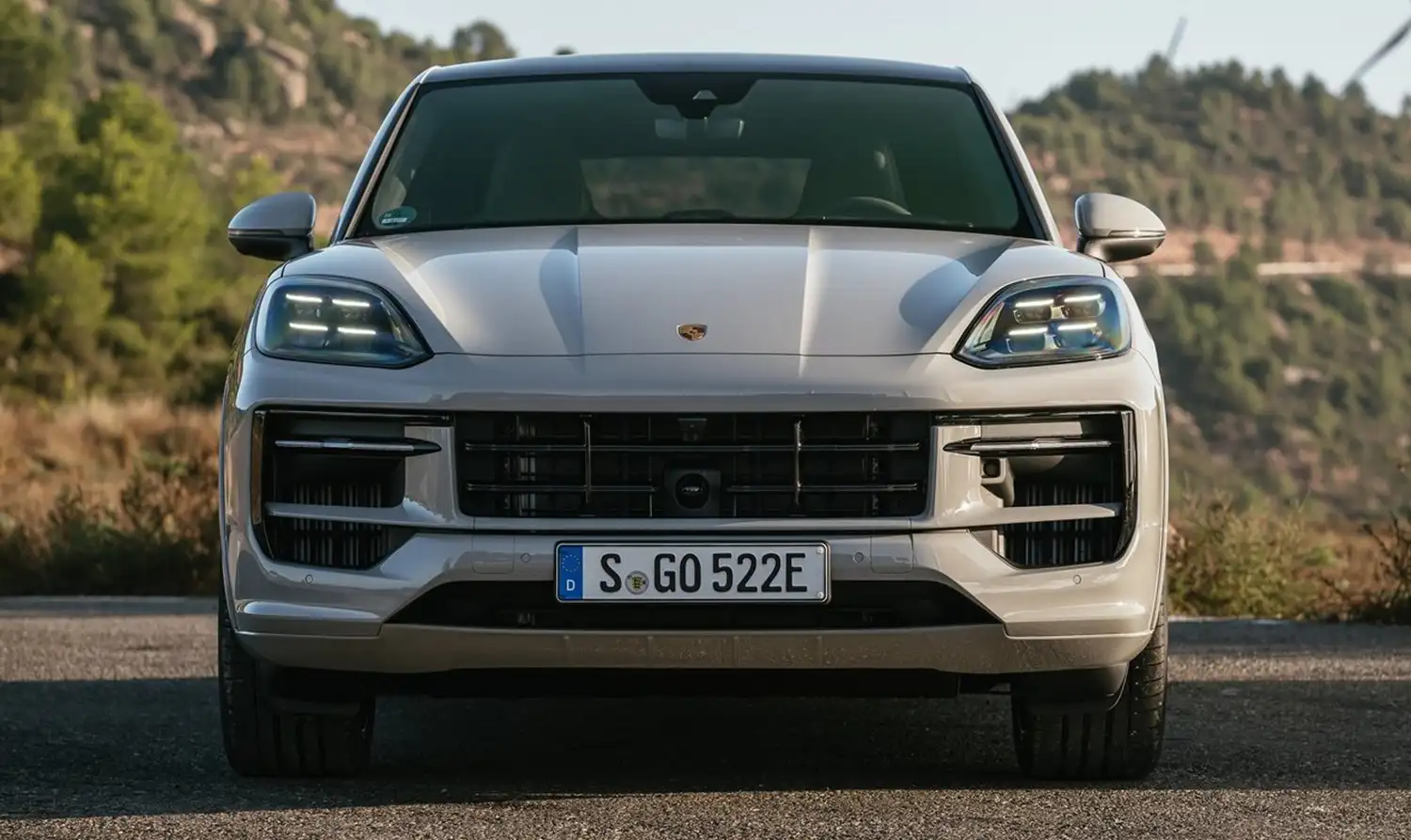
Powerful look and new Porsche Driver Experience
Both new E-Hybrid variants of the Cayenne benefit from the fundamental upgrades that the model series underwent in early 2023. A new front end has been combined with wings that are more strongly arched, and a new bonnet. This emphasises the car’s width. The headlights create a strikingly technical impression. In the rear, the SUV adopts the lower number plate position of the Coupé.
Inside, all the new Cayenne models have an emphatically driver-oriented control concept. Functions with a direct impact on driving are located directly on or immediately next to the steering wheel. The driver now operates the assistance systems via a driver assistance lever on the left side of the steering wheel. The automatic gear selector lever is to the right of the steering wheel on the dashboard.
The new Porsche Driver Experience creates a focused yet digitally enriched driving experience. For the first time, Porsche is offering a 10.9-inch display for the passenger side in the Cayenne. It offers access to performance data, the infotainment system and, depending on the market, the option of streaming videos while on the road. Technical safeguards ensure that this does not distract the driver.
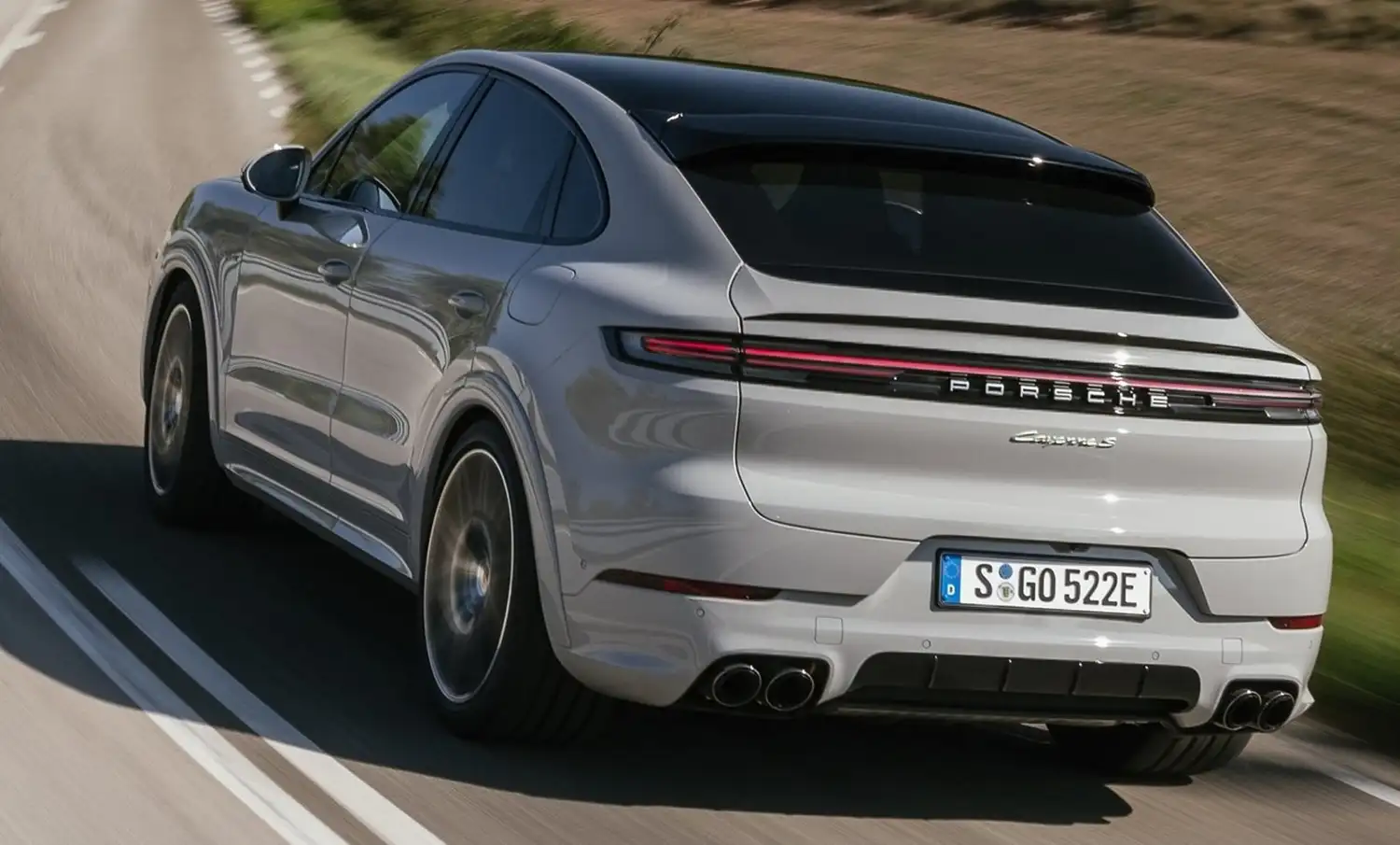
Cayenne S E-Hybrid
The design of the Porsche Cayenne S E-Hybrid underscores its positioning. It features the 20-inch alloy wheels from the Cayenne S, with 20-inch AeroDesign wheels available as an option. The model also takes the two twin tailpipes of the exhaust system in brushed stainless steel on the left and right from the Cayenne S. The standard equipment also includes the Silver exterior package in the SUV and the Black exterior package in the Coupé, as well as pedal pads in stainless steel, the Sport Chrono package including a new mode switch for quick selection of driving modes and a central tachometer on a black dial in the digital 12.6-inch instrument cluster.
Cayenne Turbo E-Hybrid
The Cayenne Turbo E-Hybrid SUV and Coupé are clearly recognisable as the top models in the line. Both body variants feature a particularly sporty front-end reserved for Turbo models, with enlarged cooling air intakes and shiny black airblades. Other features of the turbo models include a rear trim panel painted in the exterior colour and wider wings in the exterior colour. This clearly distinguishes the Turbo E-Hybrid models from the other variants of the Cayenne.
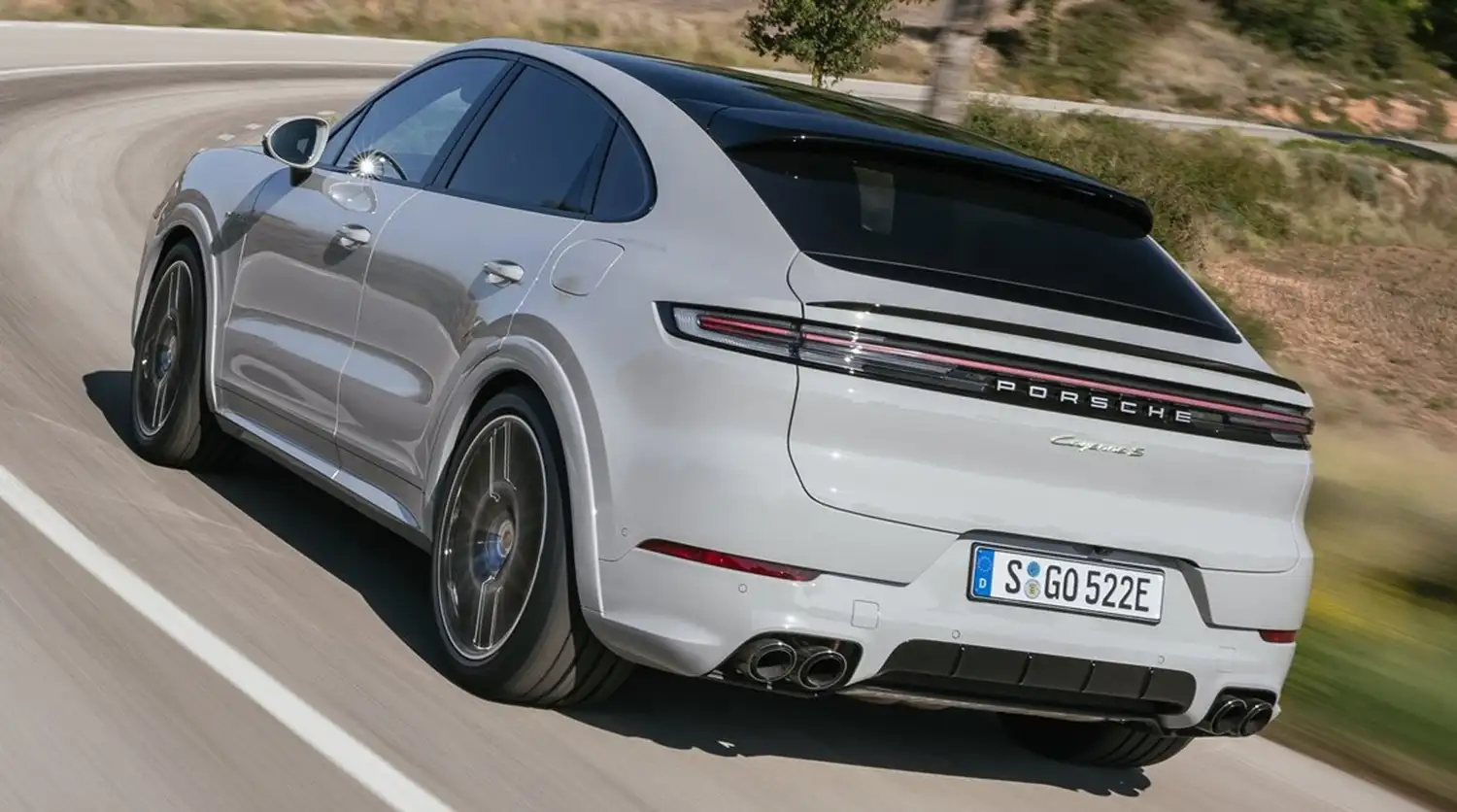
The exhaust system used exclusively on the Turbo models, with two twin tailpipes in brushed stainless steel on the left and right of the rear section, further emphasises the model’s performance-focused character. The design of the one-piece, 21-inch alloy wheels in the Cayenne Turbo design in Dark Titanium (glossy) is also reserved for the Turbo models. As in all the E-Hybrid variants, there is a choice of Acid Green brake callipers instead of the standard red brake callipers. The standard equipment in the Turbo E-Hybrid models includes the new HD-Matrix LED headlights. Along with the Coupé, the Cayenne SUV also has active aerodynamics: the spoiler on the edge of the roof automatically extends at higher speeds to increase driving stability.
Inside, the most powerful Cayenne underscores its sportiness with aluminium inlays in the dashboard and the door panel trims. The roof lining is made entirely of the particularly sporty Race-Tex microfibre material. The standard equipment also includes a heated GT sports steering wheel, a mode switch for fast and direct selection of the desired driving mode, and 18-way adjustable leather sports seats with the model name embroidered in the headrests. As an alternative to the sports seat, 14-way adjustable leather comfort seats are available. The tachometer with the “Turbo” logo is positioned in the middle of the all-digital dashboard. The high-quality BOSE® Surround Sound system also comes as standard.
